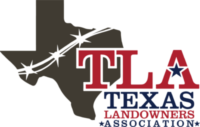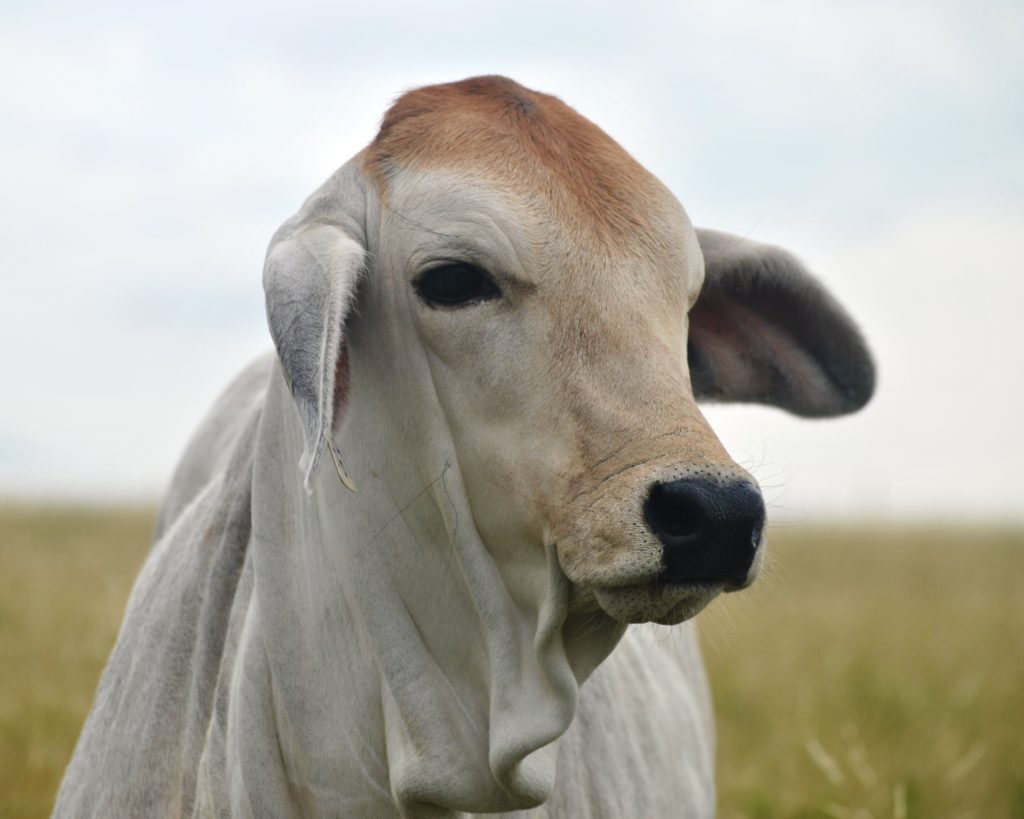
Brahman Cow Photo By: ABBA
How many cows per acre in Texas?
Stocking Rates in Texas vary from 1 cow per acre on heavily managed pasture in the Eastern portion of the state to 1 cow per 150 acres (4 cows per section) in the Trans Pecos Region of the state.
In this article I’ll give you a range of stocking rates for several Texas regions AND tell you how to determine how many cattle your land can support, no matter where you are in the U.S.!
| Cows Per Acre in Texas | |||
| Texas Region | Improved/Managed Pasture | Native Pasture | Woodland |
| East Texas | 1 AU / 1-3 Acres | 1 AU / 3-6 Acres | 1 AU / 50-75 Acres |
| Edwards Plateau | 1 AU / 2-6 Acres | 1 AU / 10-60 Acres | 1 AU / 50-75 Acres |
| Pan Handle | 1 AU / 2-6 Acres | 1 AU / 20-50 Acres | N/A |
| Post Oak Savannah | 1 AU / 3-6 Acres | 1 AU / 8-15 Acres | 1 AU / 50-75 Acres |
| South Texas Plains | 1 AU / 2.5 – 8 Acres | 1 AU / 15-30 Acres | 1 AU / 35-60 Acres |
| West Texas | N/A | 1 AU / 35-150 Acres | N/A |
| 1 Animal Unit (AU) =1,000lb cow with calf | |||
| www.LandAssociation.org |
For more articles about livestock and cattle in Texas, check out our Livestock Section.
This topic seems to be one of the most misunderstood topics from landowners. Many new landowners rely on STOCKING RATE advice from neighbors or from the guy leasing their property to run cattle. While there is something to be said for experience, I have personally seen this advice lead to over grazed pastures which look much more like parking lots than fields.
QUICK DEFINITION: Stocking Rate is defined as the amount of land allocated to each animal for the grazable period of the year. i.e. 1 AU / 15 Acres
How many cows will your land support in Texas?
If you have livestock, or plan on running livestock on your property, it’s important that you understand how many head your property can support, known as your property’s Carrying Capacity. This is defined as the number of animals your property can support year after year without exhibiting damage to the vegetation or related resources.
Understanding this number is important because if you understock you will not maximize livestock production. However, if you overstock, your property will lose vegetation productivity, exhibit soil compaction, soil loss, a loss of wildlife diversity, and a host of other consequences that can take years to recover from. Overstocking will ultimately reduce your property’s carrying capacity.
What is an Animal Unit?
Livestock come in many shapes and sizes and include cattle, sheep, and goats. There is large variability in the size of cattle also. Some cattle breeds are larger than others and require more forage. Since there is such a variability in size for livestock, range managers and cattlemen use a standardized term called an Animal Unit.
An ANIMAL UNIT represents a 1,000lb cow (with or without a calf under 6 months old). A cow of this size consumes 26lbs of dry matter forage per day or 9,490 lbs/year.
Dry weight is calculated by drying grass clippings in an oven until there is no moisture remaining. Think of 26lbs of dry hay vs 26lbs of fresh grass clippings.
If you would like specific dry matter demand requirements for cattle across a series weights check out this nifty Dry Matter Demand Chart for classes of cattle.
It’s important to understand this concept because as we work through calculating the carrying capacity of your property, we will do so by calculating the number of Animal Units it can support over a 1 year period.
We can relate how other grazers compare to an animal unit simply by looking at how much forage they require daily and prescribing them an Animal Unit Equivalent (AUE). For example, a mature goat will consume about 5.2lbs of dry matter per day (1/5 of what a 1,000lb cow eats). So, a goat would have an AUE of (.2).
You can also deduce that 5 mature goats consume about the same as a 1,000lb mama cow, so 5 goats equal 1 animal unit. The table below shows how each type of livestock converts to an animal unit.
| Type of Animal | Animal Unit Equivalent (AUE) |
| Beef Cow (yr. long avg) | 1.00 |
| Beef Cow (Dry) | 0.90 |
| Beef Cow (Milking) | 1.20 |
| Bull (Mature) | 1.25 |
| Calf (Weaned) | 0.50 |
| Heifers (13-18 mo.) | 0.70 |
| Bred Heifers (19-24 mo) | 0.85 |
| Steers (13-18 mo.) | 0.70 |
| Steers (19-24 mo.) | 0.85 |
| Horse (Mature) | 1.25 |
| Ewe (Mature) | 0.20 |
| Lamb (1 yr.) | 0.15 |
| Ram (Mature) | 0.25 |
| Goat (Mature) | 0.20 |
| Bison | 1.00 |
| Bighorn Sheep | 0.20 |
| Deer (Mule) | 0.15 |
| Deer (White-tailed) | 0.15 |
| Elk | 0.70 |
| Antelope | 0.20 |
How many cows will my land support? Acres per Cow..
Now that you know how much a cow eats and what an Animal Unit is, let’s figure out how many Animal Units your land can support across a 1 year timeline. I’m going to keep this as simple as possible for you.
How much forage does your land produce?
The first step in this process is to determine how much forage your land produces. This will depend on the species of forage you’re growing and how much rainfall you get.
How much forage will you leave behind for regrowth?
It’s important to remember that you can’t utilize ALL of your land’s forage for livestock. Some must be left behind to regrow year after year. A general rule of thumb is “Take Half, Leave Half” meaning you should leave half of your land’s forage behind.
Results suggests that forage production AND livestock yield ($/acre) peak by taking half of the forage and leaving half of the forage. Plants require leaf area to metabolize and restore carbohydrates to their root systems. Consistently removing foliage will reduce root vigor and can eventually leading to death of the plant. I’ve included references on livestock yield vs stocking rates at the bottom of this article.
How much forage makes it into the cow’s stomach? Utilization Rates….
You must also understand that not all forage removed will make it into the cattle’s gut. About half of what is removed decays, gets trampled, or is consumed by insects. This is known as the utilization rate and must be applied in the formula below.

Let’s work through an example, then I show you how to get a specific number for your land.
How to calculate how many cattle to run on your Property? EXAMPLE
In our example we have a 100 acre property with 50% heavy tree and brush cover. I’ve even included two scenarios, 1 where it’s obviously only 50% will be utilized and another more common scenario where tree cover is spread randomly through the property.
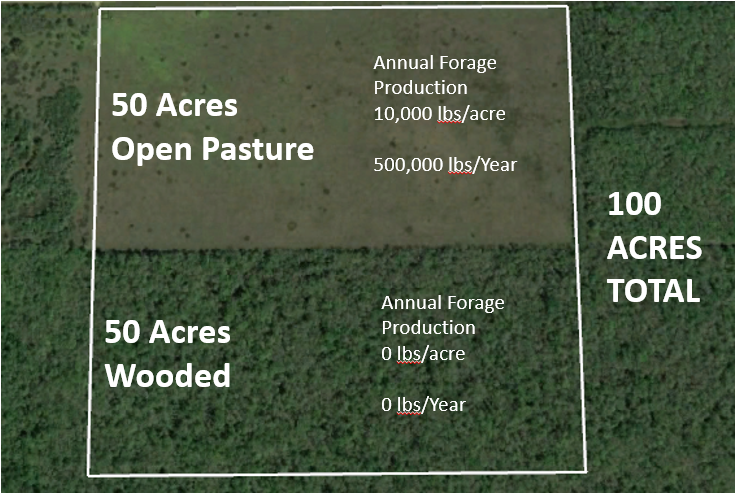
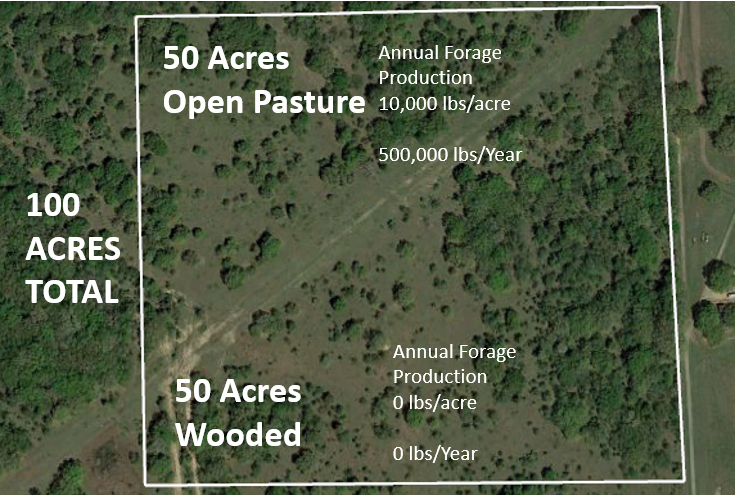
In each case we only have 50 acres of available forage production. Let’s assume our forage species is a hybrid Bermudagrass that receives 30” of rainfall per year, fertilized twice a year, and yields 10,000lbs per acre annually. Don’t worry I show you how to estimate your property’s production below.
Since we have 50 grazeable acres, this would put our Total Annual Forage Production at 500,000lbs (50 acres x 10,000lbs of forage production/acre). In this case our formula would look like this.

Since we’ll take half and leave half, we’ll multiply our forage production by a 50% and get to 250,000lbs of forage we are willing to remove from our pasture.
We must then multiply again by 50% to account for lost forage and trampling, referred to as utilization rate, which leaves us with 125,000lbs of Total Annual Available Forage. This is what we will allocate to our livestock.
Here is what our total annual production looks like:
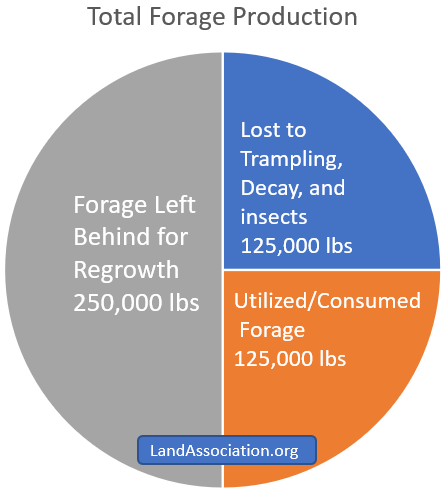
How to Calculate Carrying Capacity and determine number of acres per cow.
Now that we know your land produces 125,000lbs of available forage, it’s time to determine how many animal units it will support across a 1 year timeline.

We divide the amount of our available forage by the known annual consumption of an animal unit and arrive at a total carrying capacity of just over 13 animal units. This puts the stocking rate of our 100 acre property at 1 Animal Unit /7.7 acres.

Note: If we were fence in the 50 acres of open pasture our stocking rate for that pasture would be 1 animal unit/3.85 acres.
How to determine how many cattle YOUR land will support?
Now that we’ve worked out an example, I’d like to teach you how to determine this number for your own land.
This is a 3 step process:
Step 1 – Determine how many grazable acres you have
Step 2 – Determine how much forage your land produces
Step 3 – Run the calculation above with known animal unit consumption rates.
Step 1 – How to determine the number of grazeable acres you have?
Just because your property is 100 acres doesn’t mean you have 100 grazeable acres. As in the example above you must not include areas not suitable for grazing or forage production.
Areas under heavy woodland, on steep slopes (greater than 10%), and fenced off from grazing should not be included in this calculation since your cattle will get little to no value from these locations.
For large ranches cattleman should keep in mind that cattle get almost no use from areas further than 2 miles from the nearest water source, although this isn’t a problem for most landowners.
In the example above I show two separate 100 acre tracts, each with 50 grazeable acres arranged in two different ways. Do your best to account for areas with little to no grazing value and make sure they’re excluded from your grazeable acres so you don’t over state your property’s forage production.
Use tools such as google earth’s polygon tool to determine total grazeable acres. You can also have a local NRCS Agent, Agrilife Extension Agent, or Texas Parks and Wildlife Biologist help with this.
Step 2 – How to determine how much forage your land produces?
OK, step 1 was easy, the tricky part is really knowing how much your land produces. This will vary wildly depending on where you are in the state, what species of forage (grass) is in your pastures, and how you are managing it. Don’t worry. there is plenty of help out there to get you this number.
I’ve listed 3 options here that will help you out.
You should know that there is a scientific method that involves clipping a sequence of square meter plots across the year, drying them out, weighing them post drying, and extrapolating the values across the rest of your land. This is how the Bureau of Land Management (BLM) determines how many cattle can be run on its leased land in the western part of the country.
There are 3 much easier methods to determine how much forage your land produces. (NRCS or Agrilife, WebSoil Survey, published production results)
Option 1 – Estimating forage production from the NRCS – Web Soil Survey
One of my favorite tools to tell Landowners about is the Web Soil Survey. It’s a free online tool provided by the USDA-Natural Resources Conservation Service (NRCS) and it provides WAY more information than just soils data.
Historically, if you wanted to learn about soils, annual rainfall, or pasture productivity on your place you would have picked up a copy of the county soil survey at the local USDA – NRCS (used to be Soil Conservations Service SCS) office and thumbed to the map that contained your property. Now all of that information and MORE is available at your fingertips.
It will also give you average production values of native and introduced grasslands. The web soil survey basis this information on soil type and average rainfall.

I’ll post a tutorial on how to use this amazing tool later.
Option 2 – Call the Natural Resources Conservation Service
Did you know there is a government agency dedicated to helping landowners like you with questions like this? Their role is to provide unbiased information to help you best manage your land. By the way, it’s a FREE service. Well, it’s funded by tax dollars so free is a relative term, but you get the drift.
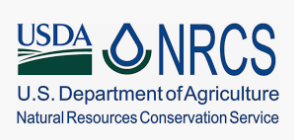
NRCS agents are knowledgeable about soils, wildlife, rangeland management, livestock production, and crop production. Find your local office by clicking HERE and select the county your property resides in. You can typically arrange to meet an agent onsite within a couple of weeks.
They’ll meet you on your property. Once onsite they’ll walk your property with you and talk to you about which plants you have onsite, how much they produce on an annual basis and will help you determine your stocking rate. They will know what stocking rates other landowners around you are running and should give you a good indication of what your land will support.
A NRCS agent can also discuss which cost sharing programs are available in your area and if you’re a good candidate for one. The agent can also help make a map of your property with an overlay of various soil types. Similar to what you’ll do by using Web Soil Survey.
I participated in an internship for this organization for 2 summers while in my undergraduate program at Texas A&M. I can tell you that they are all knowledgeable folks and my experience was very positive with this organization.
Option 3 – (TX Only) Call Texas Agrilife Extension

Another FREE service available to Texas landowners is the Agrilife Extension program. Much like the NRCS, this agency is dedicated to helping landowners. They respond to individual questions and will come out to your property and visit with you about your land.
Click here to start the process! https://agrilifepeople.tamu.edu/extensionLists/counties
Step 3 – Run the calculation on your property
Use the example above and include data from your property
Closing
I very much hope that you found this article helpful! This information is just scraping the surface of a very in depth science. Forage production is heavily researched around the world, as are livestock production and gains. I’ve included several helpful references below to assist you on your journey.
We have a ton of other resources available here for you. Please feel free to check them out.
About the Author:
Michael Morrow is the founder of the Texas Landowner’s Association and a land agent in the state of Texas. He is dedicated to ensuring landowners have the resources, information, and platform they need to effectively accomplish their personal goals for their property. His undergraduate and graduate level studies at Texas A&M were focused around Rangeland Ecology and Wildlife Management. He’d love to help you with your next purchase or help take your property to market. You can reach him here by emailing Michael@LandAssociation.org
Resources and Citations
I studied rangeland ecology during my undergraduate and graduate programs at Texas A&M University. There are a number of amazing people and resources that will help you on your way. Here are a few that helped me on mine!
https://tpwd.texas.gov/landwater/land/habitats/post_oak/habitat_management/cow/
https://www.nrcs.usda.gov/Internet/FSE_PLANTMATERIALS/publications/idpmstn9390.pdf
http://edwards.agrilife.org/files/2011/03/2ll.pdf
https://agrilife.org/victoriacountyagnr/files/2010/07/Reference-Guide-for-TX-Ranchers.pdf
http://forages.tamu.edu/PDF/scs2002-14.pdf
https://www.ams.usda.gov/rules-regulations/organic/handbook/5017-1 – https://www.ams.usda.gov/sites/default/files/media/NOP-5017-3-DryMatterDemandTablesforClassesofBeefCattle.pdf
